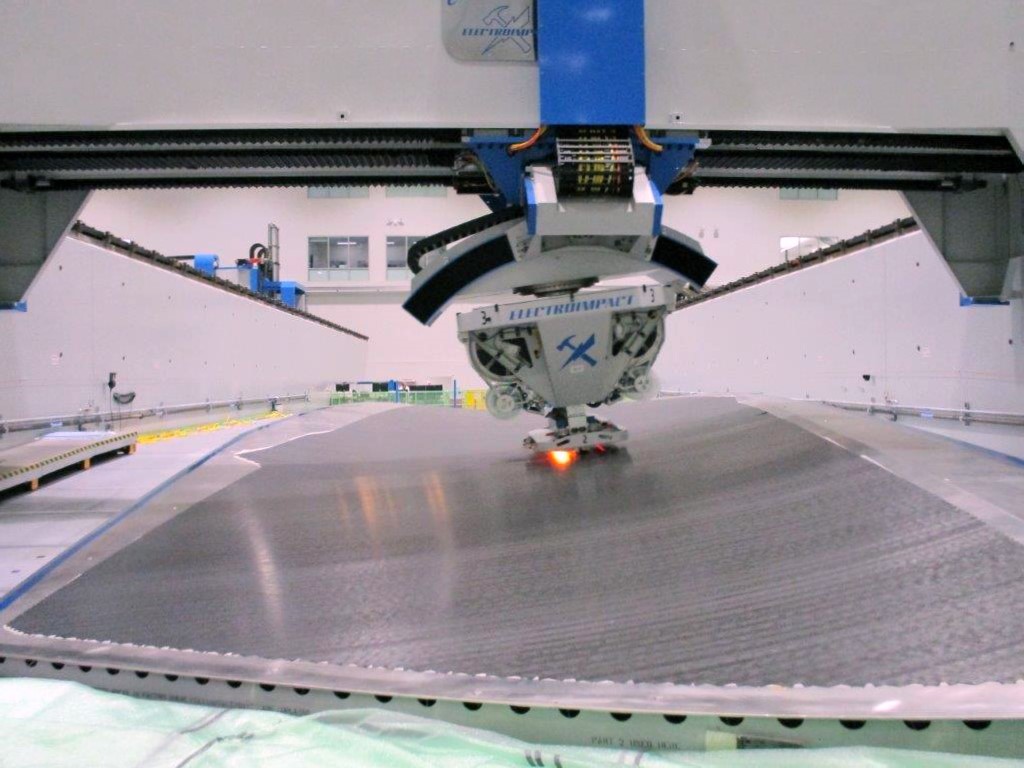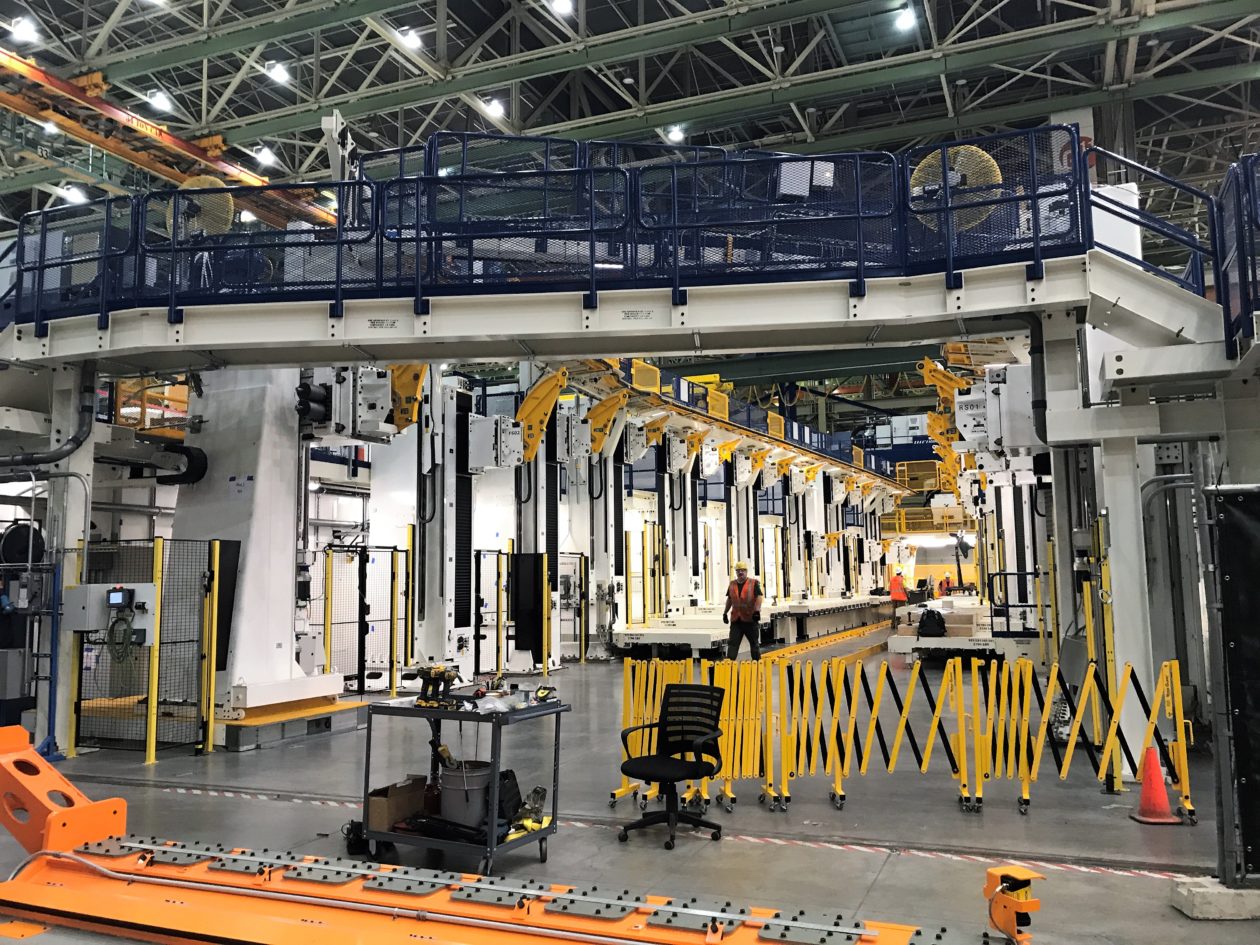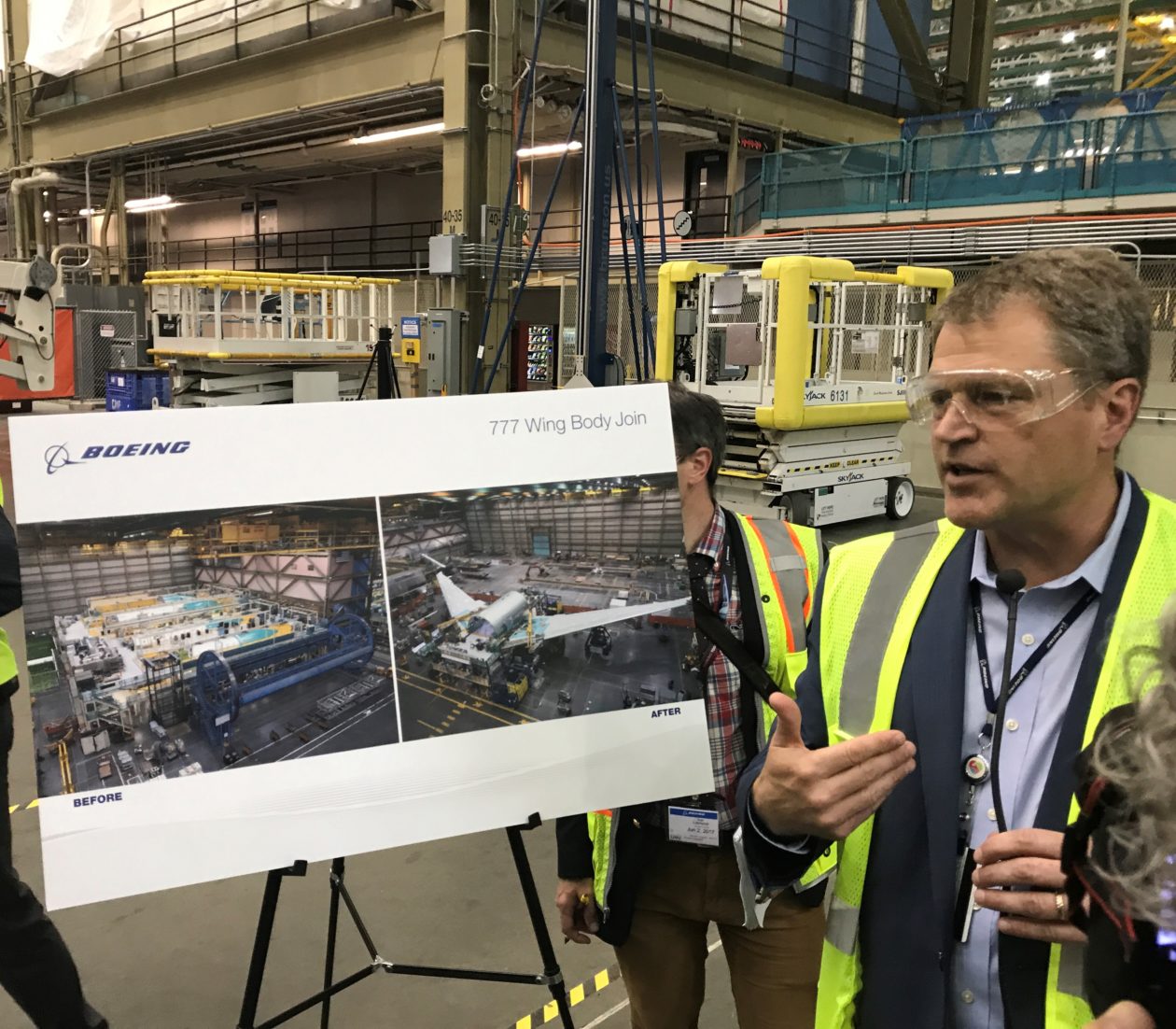
EVERETT, Wash. – Some manufacturing workers may worry that robots will be stealing their jobs, but not Boeing’s Jordan Northrup.
He’s glad to work with Robot 1 and Robot 2, the industrial-strength machines that drill holes and hook up fasteners in the metal panels of a Boeing 777 jet’s fuselage.
“Instead of blowing my shoulder out, shooting 300 fasteners a day or countersinking 300 holes a day, I get to learn a new skill. … I get to run a robot,” said Northrup, structures team lead for midbody at the Fuselage Automated Upright Build facility in Boeing’s Everett plant.
The facility, known as the FAUB, is just one of the places where Boeing is upping the ante for automation in the airplane industry. Boeing showed off the FAUB and other robotic hot spots at its Everett plant as a preview for this month’s Paris Air Show.
As Boeing gears up to start building 777X airplanes, the company is building on its experience with robot-assisted assembly for the widebody 787 Dreamliner and single-aisle 737 MAX as well as the 777.
“The 777X actually is designed for automation from the base,” said Jason Clark, vice president of operations for the 777 and the 777X. “It isn’t our first one, but it’s the next generation.”
- Workers at Boeing’s 777X Composite Wing Center in Everett get a robot ready for “drill and fill” tasks. (GeekWire Photo / Chelsey Ballarte)
- An automated fiber placement machine lays down strips of carbon fiber to create components for the 777X’s wings. (Boeing Photo)
- Upper and lower rows of robotic arms are designed to hold wing panels in place for assembly. (GeekWire Photo / Alan Boyle)
- Boeing’s Brad Zaback shows how the process of attaching a 777 wing to the fuselage will change when the Everett plant is remodeled. (GeekWire Photo / Alan Boyle)
- Robot 1 sidles up to a Boeing 777 fuselage. (GeekWire Photo / Chelsey Ballarte)
- Robot 2 works on a 777 fuselage. (GeekWire Photo / Chelsey Ballarte)
- A worker keeps watch on a riveting robot inside the mid-body fuselage of a 777 jet. (Boeing Photo)
Robots will lay down precisely placed strips of carbon fiber tape to build up the elements of the 777X’s composite wings, drill and fill the attachment points for the wing panels, and position those panels for assembly.
The machines don’t come cheap: Boeing invested $1 billion in its 777X Composite Wing Center, which was built in Everett thanks in part to $8.7 billion in tax incentives that Washington state will be providing through 2040.
Kevin McAllister, the president and CEO of Boeing Commercial Airplanes, says the billion dollars is the “right investment” for the company, considering how much is riding on the 777X.
“Automation is as much about safety and ergonomics and a better work environment as it is about cost and productivity,” he told reporters last week. “I think the focus we have on the production system, on optimization, is important.”
The metrics from the FAUB operation bear out what McAllister, and Northrup, say about improving the work environment, according to Brad Zaback, vice president and deputy general manager of the 777 program.
His group is keeping an eye on the tally of significant job-related injuries, also known as recordables. “We’ve had a 40 percent reduction when we started looking at this, from November to today,” Zaback said.
Zaback said there’s also evidence that robotically machined parts fit together better, and suffer fewer defects from scratching steel rivets against the 777 fuselage’s aluminum skin. “Our big driver [for automation] was riveting, going into it from a safety and quality perspective,” Zaback said.
Clark said adding automation to the assembly process can pose a huge hurdle at first. Last year, several mechanics complained to The Seattle Times that the FAUB was turning out incomplete work, and blamed the robots. At the time, Clark acknowledged that the system was “a little tough in the teething,” but said much of the disruption was due to problems with suppliers.
The hurdles can loom higher when new twists in automation are combined with the other challenges involved in starting up 777X production.
Previously: An inside look at Boeing’s 737 MAX tech
“When we put a new product on an existing line, it’s like riding a bicycle on the freeway,” Clark said.
To make for a smoother ramp-up, Boeing plans to start by alternating 777 and 777X airframes on the assembly line for low-rate initial production, a term that’s abbreviated as LRIP.
Eric Lindblad, vice president and general manager for the 777X program, said the timetable calls for the first flightworthy airplane to be assembled in 2018 and undergo testing in 2019.
“Our plan is to deliver the airplane, as promised, in 2020,” Lindblad told reporters. “We’re working with customers right now as to the opportunity, maybe, to deliver a little bit early.”
If the 777X project turns out to be as successful as Boeing hopes, robots will have played a role – but Perry Moore, 777X wing integrated product team leader, says the humans deserve most of the credit. In fact, Boeing’s experience suggests that it’s impossible to take humans out of the loop — which will surely come as a disappointment to Terminator robots from the future.
“There’s lots of robotic-human interaction on this,” Moore said. “There’s a significant amount of manual work left in this process.”










